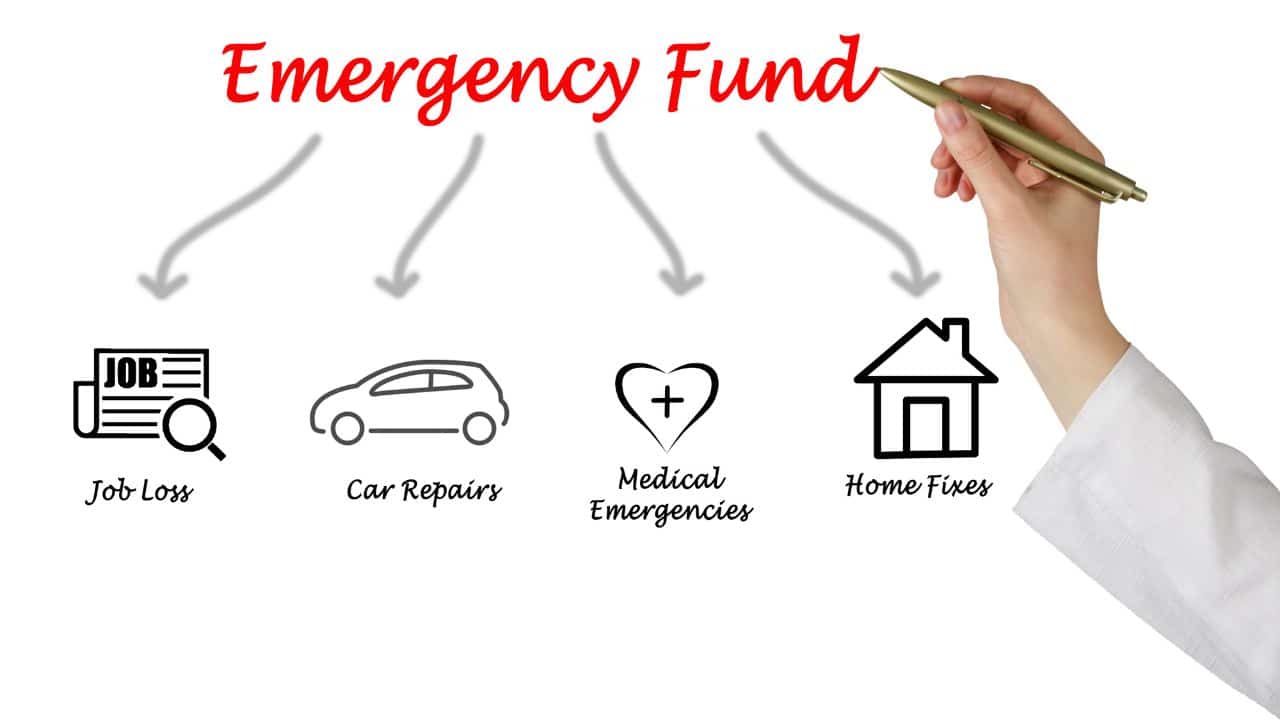Your financial future isn’t something that materialises out of the blue. It is a detailed, thought-out process that begins with steps taken today. A stable financial future is a goal that Greenway Financial Advisors can help you achieve. Let’s explore some proven ways to jump-start your financial future.
Financial success begins with a well-planned budget. Budgeting is the process of creating a plan to manage how you spend your money, ensuring that you have enough for essentials like rent, groceries, and savings. Without it, you risk overspending on non-essentials and potentially falling into debt.
- Understand Your Income: Calculate your monthly net income after tax and other deductions. This amount forms the basis of your budget.
- Identify Essential Expenses: This includes bills, groceries, transportation, and other recurring expenses.
- Allocate for Savings: Make a habit of ‘paying yourself first.’ Set aside a portion of your income for savings before accounting for other expenses.
- Plan for Non-essentials: What remains after deducting savings and essential expenses can be used for non-essentials like entertainment and luxury items.
- Monitor and Adjust: Review your budget regularly, we would suggest on a monthly basis and adjust it based on changes in income or expenses.
The budgeting process might seem tedious initially, but it becomes easier and more rewarding as you see the results.
Need Financial Help?
If you need any help understanding your financial contact us now. We offer a no obligation initial call.
Pay Off High-Interest Debt
Debt can be a significant roadblock when trying to jump-start your financial future. High-interest debt, such as credit card debt, personal loans, and payday loans, can quickly spiral out of control if not managed properly.
To tackle high-interest debt:
- Prioritise Your Debts: List all your debts from the highest interest rate to the lowest. Focus on paying off the highest-interest debt first while making minimum payments on the rest.
- Consider Consolidation: Deb consolidation can be a good strategy if you have multiple debts. This means combining all your debts into one loan with a lower interest rate, making it easier to manage and potentially saving you money in the long run.
- Create a Debt Repayment Plan: This could include setting aside a portion of your income specifically for debt repayment or employing methods such as the ‘snowball method’ or the ‘avalanche method.’
Remember, the aim is to free up more of your income for savings and investment by reducing your debt burden.
Build an Emergency Fund

An emergency fund is a financial safety net designed to cover unexpected expenses such as medical emergencies or sudden job loss. Having an emergency fund provides peace of mind and financial security.
Here are some steps to build an emergency fund:
- Determine Your Emergency Fund Size: Financial experts often recommend having enough to cover three to six months’ worth of living expenses.
- Start Small: If you’re just starting out, aim for a smaller goal, like €500 or €1000. Then gradually increase your savings until you reach your desired amount.
- Set up Automatic Transfers: Automating your savings can make the process easier. Set up automatic transfers from your checking account to your savings account.
- Keep It Accessible: Your emergency fund should be easily accessible. Consider keeping it in a high-yield savings account offering higher interest rates than a regular one.
Invest in Your Retirement
Retirement may seem a long way off, but the earlier you start preparing, the more comfortable your retirement years will be.
- Understand Your Pension Scheme: If you’re employed, understand your employer’s pension scheme. Ensure you’re contributing enough to get any available employer match—it’s essentially free money.
- Consider a Personal Retirement Savings Account (PRSA): If you’re self-employed or your employer doesn’t offer a pension scheme, consider setting up a PRSA.
- Diversify Your Investments: Don’t put all your eggs in one basket. Diversify your retirement portfolio to spread risk.
- Monitor Your Progress: Regularly review your retirement plan and adjust your contributions or investments as necessary.
Save for Your Children’s Education

The cost of education, especially higher education, can be substantial. Starting to save early can help ease the financial burden when the time comes.
- Understand the Costs: Research the potential costs of your child’s future education, including tuition, accommodation, books, and other expenses.
- Set up a Dedicated Savings Account: Consider setting up an account specifically for education savings. This will help keep the money separate from your other savings and expenses.
- Consider Education Bonds or Funds: These are specifically designed for education savings and can offer good returns over the long term.
- Start Early and Save Regularly: The earlier you start, the more time your money has to grow. Even small, regular contributions can add up over time.
Invest in Property
Property investing can be a great way to build wealth. It can provide income through rental yields and capital appreciation.
- Own Your Own Home: Get on the property ladder by purchasing a home using a mortgage. Now instead of paying rent, you are paying off a mortgage and in time you will own the property.
- Understand Your Goals: Are you looking for rental income, capital appreciation, or both? Your goals will determine your investment strategy.
- Research the Market: Understand the current market conditions, potential growth areas, and risks involved.
- Consider Your Financing Options: Will you pay cash, get a mortgage, or seek investment partners?
- Work with Professionals: Consider working with a real estate agent, financial advisor, or attorney to help you navigate the process.
Investing in real estate requires patience and diligence, but the rewards can be substantial.
Start a Side Hustle
In this age of the internet, starting a side hustle has become easier than ever. It can be a great way to supplement your income and even turn a hobby or passion into a money-making venture.
- Identify Your Skills or Interests: What are you good at, or what do you enjoy doing in your free time? These can often be turned into profitable ventures.
- Market Research: Is there a demand for the product or service you’re offering? Who are your competitors, and how can you differentiate yourself?
- Create a Business Plan: Even a simple plan can help you stay focused and measure progress.
- Promote Your Side Hustle: Use social media, word of mouth, or other marketing strategies to get the word out.
Remember, every big business started small. Even a small side hustle can grow into a full-time venture over time.
Create Multiple Streams of Income
Having multiple streams of income can provide financial stability and increase your earning potential. This can include your main job, a side hustle, investments, rental income, etc.
- Diversify Your Income: Like diversifying investments, diversifying income can spread risk. If one source of income falls, you have others to fall back on.
- Passive Income: This income requires little to no effort to earn and maintain. It can come from investments, real estate, or businesses.
- Invest in Skills: Investing in new skills or education can open up additional income opportunities.
Remember, the key is to create a balanced and sustainable mix of income streams that align with your skills and lifestyle.
Invest in Stocks and Bonds
Investing in stocks and bonds can be effective to grow your wealth and count in ways to jump-start your financial future.
Stocks represent ownership in a company and can provide high returns over the long term. However, they also come with higher risks.
Bonds are loans you give to a company or government in exchange for regular interest payments and the return of the principal amount at maturity. They are generally considered safer than stocks but offer lower returns.
Consider the following when investing in stocks and bonds:
- Understand Your Risk Tolerance: Stocks and bonds come with different levels of risk and potential returns. Understand what level of risk you’re comfortable with.
- Diversify Your Portfolio: Don’t put all your money in one stock or bond. Spread your investments across different companies and sectors.
- Regularly Review Your Portfolio: Market conditions change, and so should your investment strategy. Regularly review your portfolio and adjust as necessary.
Invest in Mutual Funds
A mutual fund pools money from many investors to invest in a diversified portfolio of stocks, bonds, or other assets. Professional fund managers are in charge of managing them.
Investing in mutual funds can be a good choice for beginner investors due to their diversification and professional management. However, they come with fees and can have lower returns than individual stock investing.
- Understand the Fund: Know what assets the fund invests in, its investment strategy, past performance, and fees.
- Consider Your Investment Goals: Different funds suit different investment goals, risk tolerances, and investment horizons.
- Diversify Your Investments: Don’t put all your money in one fund. Consider investing in multiple funds to spread the risk.
Invest in Exchange-Traded Funds (ETFs)
ETFs are similar to mutual funds but are traded on stock exchanges like individual stocks. They offer diversification, are more liquid than mutual funds, and usually have lower fees.
Consider the following when investing in ETFs:
- Understand the ETF: Know what assets the ETF tracks, its past performance, and its fees.
- Consider Your Investment Goals: Different ETFs are suited to different investment goals, risk tolerances, and investment horizons.
- Diversify Your Investments: Don’t put all your money in one ETF. Consider investing in multiple ETFs to spread the risk.
Invest in Cryptocurrency
Cryptocurrencies like Bitcoin and Ethereum have gained popularity in recent years. They offer the potential for high returns but also come with significant risks.
- Understand Cryptocurrency: Cryptocurrencies are digital or virtual currencies that use cryptography for security. They are highly volatile and can be complex to understand.
- Only Invest What You Can Afford to Lose: Due to their volatility, you should only invest money you can afford to lose.
- Secure Your Investments: Cryptocurrencies are stored in digital wallets. Make sure your wallet is secure to prevent theft.
- Consider Professional Advice: Due to their complexity, consider getting professional advice before investing in cryptocurrencies.
Get a Financial Advisor
Getting a financial advisor can be a wise decision when trying to jump-start your financial future. They can provide personalised advice based on your financial situation and goals.
At Greenway Financial Advisors, we have a team of dedicated professionals who can help you make informed financial decisions. Whether you’re planning for retirement, saving for your children’s education, investing in property, or navigating the world of stocks and bonds, we’re here to guide you every step of the way.
Get Life Insurance

Life insurance can provide financial security for your loved ones in the event of your untimely demise. It can help cover funeral expenses, pay off debts, and provide ongoing financial support.
- Understand the Types of Life Insurance: There are different types of life insurance, including term life, whole life, and universal life. Understand which type is best suited to your needs.
- Consider Your Financial Obligations: Your coverage amount should be based on your financial obligations, such as your mortgage, debts, and dependents’ needs.
- Regularly Review Your Policy: Your insurance needs can change over time. Regularly review your policy and update it as necessary.
Protect Your Assets
Asset protection involves strategies to protect your assets from potential lawsuits or creditors. This can include things like insurance, trusts, and business entities.
- Understand Your Risks: Different assets come with different risks. Understand what risks you face and how to mitigate them.
- Get the Right Insurance: Insurance is a key part of asset protection. Make sure you have adequate coverage for your assets.
- Consider Professional Advice: Asset protection can be complex. Consider getting professional advice to ensure your assets are properly protected.
Contact Greenway Financial Advisors to Jump-Start Your Financial Future
If you’ve made it this far and are thinking about ways to jump-start your financial future. And we’re here to help. Greenway Financial Advisors offers a range of services to help you achieve your financial goals. Contact us today to start your journey to financial success. Remember, the first step is often the hardest, but with us by your side, you won’t walk alone.
Frequently Asked Questions
How do I start my financial future?
Start your financial future by setting clear and realistic financial goals. Then, create a budget to manage your income and expenses, and start saving and investing early to take advantage of compound interest.
What are the six key areas of personal financial planning?
The six key areas of personal financial planning are income management, savings and investments, tax planning, retirement planning, risk management and insurance, and estate planning.
How do you create financial goals?
Creating financial goals involves identifying what you want to achieve financially, setting specific, measurable, achievable, relevant, and time-bound (SMART) goals, and then creating a plan to reach these goals. This could include saving a certain amount each month or investing in certain assets.
How can I get better at finances?
To get better at finances, educate yourself about personal finance concepts, create and stick to a budget, regularly review your financial goals, seek advice from financial advisors, or use financial management tools and apps.
What is the 50-30-20 rule?
The 50-30-20 rule is a budgeting guideline that suggests spending 50% of your after-tax income on needs, 30% on wants, and 20% on savings and debt repayment.
How do I restart my life financially?
To restart your life financially, start by assessing your current financial situation. Then, set new financial goals, create a realistic budget, and work on reducing and managing your debts. Building an emergency fund and saving and investing for your future are also important.


